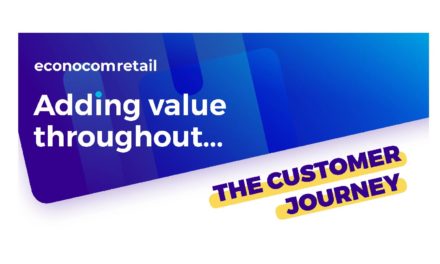
What if the price you pay for your equipment is not what it really costs you?
Behind this mysterious question lies the concept of Total Cost of Ownership.
In basic terms, this means that there are significant hidden costs that are part of the life cycle of any equipment, from solar panels to self-checkout. The costs for maintenance, upgrades, training, repairs, security, insurance etc can have a considerable impact on your budget, as they are often underestimated at the time of purchase and exceeded in the long term.
“The TCO concept is like the submerged part of the iceberg: 90% of the giant block of ice is invisible to the eye because it is located underwater.”
To understand the total cost of ownership, you have to be able to dive into the salespeople’s rhetoric. In B2B, the ownership of equipment has long been considered the best option. However, this is a misconception, and purchasing trends are changing in favour of subscription or as-a-service models that often include cost effective, all-inclusive maintenance services.
Buying will always be more interesting than renting. Or will it?
This preconceived idea comes from the real estate world. But what is generally true for buying real estate, doesn’t apply to equipment depreciating in value over time such as IT, cars or professional equipment. For these assets, renting is the right choice.
With an as-a-service model, the management of hidden costs is transferred to a third party. This is not only an important financial advantage, but also an added value in organisational terms. It is not the core business of companies to maintain IT or to upgrade tech equipment.
It is possible to save 20 to 30% of the total amount by integrating the complete life cycle of the asset. Via an as-a-service model, you save costs by not having to deal with recycling and data wiping and you always have up to date tech. In case of breakdown or outdated equipment, you receive a replacement device right away and don’t have to support heavy maintenance costs.
In the end, renting usually proves to be much more cost effective and speeds up the ability of the organisation to react faster. Markets evolve very quickly. You have to be able to adapt constantly (propose new offers, develop a new product, boost its scalability…), without increasing your debts. To do this, a subscription is ideal to avoid finding yourself with your hands tied with a bank loan over the long term.
TCO makes you aware of hidden costs
When buying an asset for a business, one often focuses on the essentials: what services will it provide in the short term to solve an organisation’s challenges? This propensity to buy quickly to meet an urgent need often makes you forget the hidden costs.
Let’s take the example of a company managing its own IT estate. By purchasing and deploying its hardware, the bill rises very quickly, both in direct and indirect costs:
- Time spent negotiating the purchase
- Administrative follow-ups
- Hardware installation
- Productive time lost by users (during installation and afterwards, given the new work habits to be put in place)
- Equipment maintenance
- Network maintenance
- Updating and securing
- Inactivity of an employee in case of breakdown
- Cost of computer support
- Management of obsolescence and resale (or replacement)
Gartner estimates that the TCO of a PC purchased at £660 ranges from £1,940 to £3,180 per year. The question of value is therefore central.
Switching to as-a-service models allows companies to reduce costs and have the right flexibility when business increases or decreases. A leaner organisation becomes more agile and keeps its cash for core activities.
With a TCO under control, you optimise your budget
The number of buyers looking for as-a-service models is constantly increasing, in order to benefit from the following:
- no risk of failure or obsolescence,
- everything is integrated and included,
- no bad surprises putting a strain on the budget
- financial visibility is increased and costs are reduced
A controlled TCO is also a way to support companies in their digital transformation.
A subscription model helps avoid unnecessary or inefficient purchases thanks to controlled financial planning, greater productivity and the latest hardware and software.
Taking the time to question the TCO means taking the necessary action to optimise your development strategy. It is difficult to anticipate the future when your assets prevent you from taking off. By calculating the TCO for each of your fixed assets, you can have an overall view of the future room for manoeuvre available to you.
To reduce your TCO, an as-a-service model is the ideal solution for all organisations.
Visit our website for more info.
















